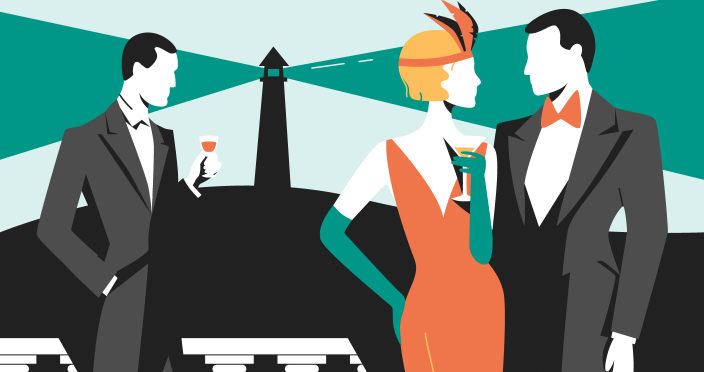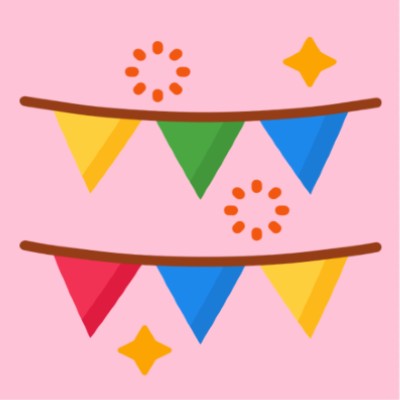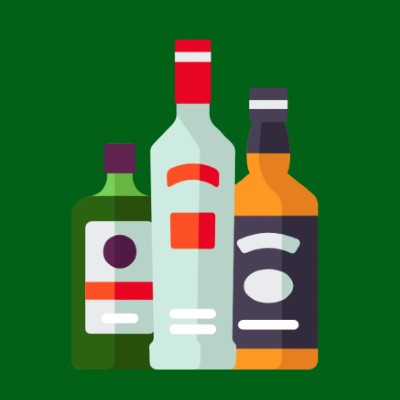F. Scott Fitzgerald’s The Great Gatsby extensively uses symbolism to aid in its exploration of themes like ambition, love, and the American Dream. One of the most important symbols in The Great Gatsby is the green light at the end of Daisy’s dock. It represents Gatsby’s yearning for an idealized future and the elusive nature of the American Dream. Another prominent The Great Gatsby symbol is the Valley of Ashes, which signifies moral decay and the gap between wealth and poverty in 1920s America.
Whether you’re analyzing the meaning of colors or the significance of Gatsby’s mansion, understanding these symbols in The Great Gatsby is key to appreciating Fitzgerald’s work. Bruccoli’s New Essays on The Great Gatsby gives us a scholarly insight that these symbols are not simply decorative but are fundamental to understanding the complex social and personal dynamics within the novel.
Read our compelling analysis and learn about the 10 symbols in The Great Gatsby and how they enrich the narrative and offer insights into the characters’ motivations and the societal context of the Jazz Age.
🌈 Symbols in The Great Gatsby
10 Symbols in The Great Gatsby
The 10 important symbols in The Great Gatsby are:
- The Green Light (dreams and unattainable future)
- The Eyes of Doctor T.J. Eckleburg (moral decay and judgment)
- The Valley of Ashes (social and economic inequality)
- Gatsby’s Mansion (extravagant but empty pursuit of love)
- Daisy’s Voice (wealth’s allure and superficiality)
- Gold and Yellow Colors (materialism and false luxury)
- Cars (status but also recklessness and destruction)
- The Weather (the characters’ emotions and events)
- Alcohol and Parties (the excess and moral decline of the 1920s)
- Gatsby’s Clothes (his attempt to reinvent himself)
In literature, symbols are used to highlight the ideas or aspects by giving them a metaphorical (not literal) meaning. It means that the object represents something more than it seems at first sight. In The Great Gatsby, symbolism is very well worked through. Every chapter contains at least several symbols that need to be interpreted to understand the novel’s messages.
The key symbols in The Great Gatsby are: colors, the green light, T.J. Eckleburg’s eyes, and Gatsby’s car.
Color Symbolism in The Great Gatsby
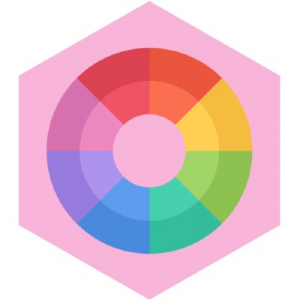
There are a few main symbols in the novel, but the most extensive one is color imagery in The Great Gatsby. Fitzgerald masterfully manipulates different colors making the story extra visual. Also, it gives the story an additional layer of meaning. In every chapter, they are varied, which helps it set a specific mood fitting to the situation. At first, it is hard to notice them because they are introduced so subtly. However, the analysis of The Great Gatsby’s color symbolism brings clarity and unveils the deeper meanings of situations.
Colors have special meaning to people all over the world. Some of them are universal, such as green, which means nature, energy, and fertility. Sometimes, people also associate it with some personal affairs, just like Gatsby does. In Chapter 1 of The Great Gatsby, color symbolism is introduced to the readers by the green light. It can be traced throughout the whole novel.
…He gave a sudden intimation that he was content to be alone – he stretched out his arms toward the dark water in a curious way, and far as I was from him I could have sworn he was trembling. Involuntarily I glanced seaward – and distinguished nothing except a single green light, minute and far away, that might have been the end of a dock.
The Great Gatsby, Nick Carraway, Chapter 1
Color symbolism may be quite controversial from time to time since everybody interprets colors in their own way. However, in Fitzgerald’s book, they are tightly interconnected with the main ideas. Therefore, it is hard to miss the meaning of a specific color.
Colors in The Great Gatsby
There are many flashy colors in The Great Gatsby, such as gold and silver or pink. They fit quite well into the luxurious setting of the novel.
Blue, white, green, and yellow are simpler and more discreet ones. Still, they play an essential role in the understanding of the main ideas. They help create this dreamlike setting of the story.
Blue in The Great Gatsby
Blue in The Great Gatsby represents loneliness and isolation. Gatsby’s “blue lawn” reflects on how sad and lonely he is, even in the middle of lavish parties. By the end of the novel, Nick mentions “the blue leaves” and “the blue smoke,” which may symbolize Gatsby’s beautiful dreams and the illusion of the American Dream.
White in The Great Gatsby
In The Great Gatsby, the white color is the Daisy‘s one. She dresses in white, and her house has a lot of white. It is a symbol of her purity and innocence, as well as her angelic beauty. On the other hand, white represents her hollowness since, except for the luxury of the upper class, she sees no purpose in life.
Green in The Great Gatsby
Green in The Great Gatsby is closely related to the green light of Daisy’s dock. Therefore, it symbolizes Gatsby’s hope and love. Just like the “fresh, green breast of the new world” was an aspiration for the first explorers, green light gives confidence to Gatsby. Finally, the green color also represents the power of money that he’s got.
Yellow in The Great Gatsby
Yellow in The Great Gatsby represents money and desire. Gatsby decided to decorate his mansion in the tones of yellow and buy a yellow car. However, the yellow color is not exactly gold. This imitation shows how Gatsby is trying to become a part of the elite club by pretending to have good taste and manners.
The lights grow brighter as the earth lurches away from the sun and now the orchestra is playing yellow cocktail music and the opera of voices pitches a key higher. Laughter is easier, minute by minute, spilled with prodigality, tipped out at a cheerful word.
The Great Gatsby, Nick Carraway, Chapter 3
Green Light in The Great Gatsby

“A single green light” is located at the end of Daisy’s dock in East Egg and carries a special meaning to Gatsby. He can barely see it from the other side of the bay but still longs for it every night. In The Great Gatsby, the green light is a significant symbol connected to Gatsby and Daisy.
The Significance of the Green Light in The Great Gatsby
It is vital to explain the significance of the green light because it is the core of Gatsby’s character. It represents his dreams and hopes about a happy future with Daisy. The light leads him towards it through the darkness. However, Gatsby cannot reach it, just like he can’t reach the green light on the other side of the bay.
If it wasn’t for the mist we could see your home across the bay… You always have a green light that burns all night at the end of your dock.
The Great Gatsby, Jay Gatsby, Chapter 5
What Does the Green Light Symbolize at the End of the Novel?
At the end of the novel, the green light symbolizes a bit of a different idea. When Nick is looking at the green light, he compares it to the image of the newly found fresh and green land, just as how it seemed to the first settlers in America. They saw it as a land of hope and infinite opportunities.
Car as a Symbol in The Great Gatsby

Cars have a symbolic meaning in the novel as well. First of all, they have been seen as a symbol of status at all times. Even today, people can be ranked by judging on the model and year of cars they own.
Gatsby’s yellow car is a perfect vehicle for him as it plays its role – to impress people. There is completely no other reason for him to own such a vehicle, mainly when Nick describes it as “monstrous” and “swollen.” But it is a car of a millionaire, and it represents Gatsby’s identity. Not only does he want to show off, but it goes back to his dream to win Daisy back, of course. He uses the money to reach his own American Dream. What is more, Gatsby’s car is a combination of the primary colors of the novel – “green leather” and “rich cream color,” which is yellow.
In Chapter 7, Gatsby objects to letting Tom drive his car. The fact highlights the importance of the car for him. Just like for most men, for him it is more than a vehicle. Gatsby despises Tom and thinks his suggestion is “distasteful.” This yellow car with green seats is a symbol of Gatsby’s dream and love for Daisy. Therefore, he sees no reason whatsoever for Tom to drive it.
Gatsby’s Car Symbolism
Therefore, Gatsby’s car symbolism can be considered a part of his identity. The car is flashy and is intended to impress everyone around, including Daisy. This kind of attitude reflects Gatsby’s “new money” status since they are the ones who try to be seen as elite but end up looking tasteless and vulgar.
TJ Eckleburg’s Eyes in The Great Gatsby

T.J. Eckleburg’s eyes stare at the Valley of Ashes from the billboard. In The Great Gatsby, the eyes have different meanings for each character, which makes the advertisement a representation of the meaningless world. It means that people give value to the objects, which makes them the creators of their own reality. Everybody sees whatever they want to see.
Who Is Dr. T.J. Eckleburg in The Great Gatsby?
In The Great Gatsby, Dr. T.J. Eckleburg is the eye doctor whose clinic is advertised on the billboard. His yellow spectacles look down on the gray people living in the ashes. However, for some people, the eyes carry religious meaning. For example, George Wilson sees the eyes of God in them and believes they send him divine messages.
Standing behind him Michaelis saw with a shock that he was looking at the eyes of Doctor T. J. Eckleburg which had just emerged pale and enormous from the dissolving night. ‘God sees everything,’ repeated Wilson.
The Great Gatsby, Nick Carraway, Chapter 8
🎵 Motifs in The Great Gatsby
A motif is an element that appears quite often in the text and carries a symbolic meaning. The purpose of the motif is to set a theme that is usually closely tied to the main idea of the work. Motifs in The Great Gatsby may seem hard to find, but they play an essential role in the overall impression.
Alcohol, parties, and weather are the three central motifs in The Great Gatsby.
Alcohol in The Great Gatsby
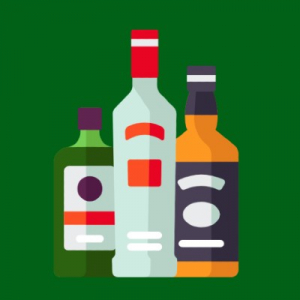
In the 1920s, people in America were partying like never before, and, of course, there was alcohol. Even though selling it was illegal, drinking was a part of everyday life. At least for those who could afford it.
In The Great Gatsby, alcohol is considered to be for the privileged only. The amount of alcohol is limited, and it is hard to get. Still, for someone who has the money, it is not a problem. However, it seems like no one at Gatsby’s parties is concerned about where all the unlimited drinks come from.
Prohibition in The Great Gatsby
Prohibition in The Great Gatsby is a big issue since the story’s setting is in the 1920s when producing and selling alcohol was banned in America. However, almost every character in the novel drinks. Prohibition doesn’t seem to have any severe effects on people’s lifestyles. Liquor stores may have lost their profits, but others, like Gatsby, use this chance.
Was Gatsby a Bootlegger?
Tom is eager to know if Gatsby is a bootlegger as the source of his fortune raises suspicions quite regularly. Even if there is no evidence, Gatsby’s underground connection with Meyer Wolfsheim leads to the conclusion that he is a criminal. Thanks to Tom’s investigation, it appears that Gatsby sells alcohol over the counters of the drug shops he owns.
Parties in The Great Gatsby
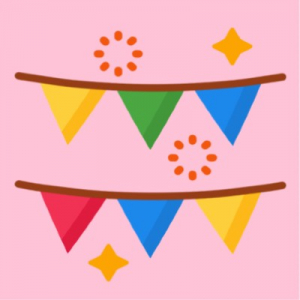
Gatsby’s parties are the motif that underlines the unnecessary festivity of the Roaring Twenties, which is usually overdone. His extraordinary, lavish, and surreal parties are held for wealthy people who don’t see any other purpose in life rather than drink and dance. The importance of this motif is that it shows the dark side of the Jazz Age.
The Great Gatsby: Party Scenes
Party scenes in The Great Gatsby only bring satisfaction to the readers. However, the symbolism that they carry is far less colorful. Hundreds of people gather in Gatsby’s mansion just to use his hospitality and get drunk. Through these extravagant celebrations, Fitzgerald highlights the significance of the moral theme in the 1920s.
All the guests are nothing more than pleasure-seekers who care little about their host. Almost none of them have met Gatsby in person. It is much more entertaining for them to create absurd rumors about his background. Their carelessness comes up when Gatsby dies since only one single party guest attends his funeral. And, of course, nobody has a clue about the underlying meaning of all the lavish parties in the West Egg.
The bar is in full swing and floating rounds of cocktails permeate the garden outside until the air is alive with chatter and laughter and casual innuendo and introductions forgotten on the spot and enthusiastic meetings between women who never knew each other’s names.
The Great Gatsby, Nick Carraway, Chapter 3
Gatsby throws parties with the only purpose of attracting Daisy’s attention. However, the first Gatsby’s party she attends doesn’t leave her impressed. She is disgusted by the inappropriate behavior of the new rich, even though she is as hollow inside as they are. Old money hates new money because they lack manners, but the truth is that neither of them has moral values. The lack of morality is also showing off through the influential guests. They use the parties to do their shady business there as even criminals attend the festivities. Also, it is a great place to find an affair, just like Tom is trying to do when he and Daisy come by. All in all, Gatsby’s parties are a great example of the ugly reality of the 1920s.
Weather in The Great Gatsby

Weather in The Great Gatsby serves as an emotional booster and has nothing to do with geography. On the day that Daisy and Gatsby reunite, it rains, emphasizing the sadness and longing for the past. While the central fight between Tom and Gatsby occurs on the hottest day, spurring their anger on.
✒️ Literary Elements of The Great Gatsby
The Great Gatsby: Genre
The Great Gatsby is a novel since it is a long piece of writing telling about human emotional experiences. It is also done with a fair bit of realism. Moreover, The Great Gatsby genre is identified as a tragedy because Gatsby possesses a desire for Daisy’s wealth, which eventually leads him to a tragic ending.
The Great Gatsby: Point of View
In The Great Gatsby, the point of view is limited to Nick’s perception. The story is told in the first person, which makes it very unreliable. Even though Nick’s imagery helps understand the situations in the book quite well, it may be corrupted by his emotions. He claims he never judges people, but it is not entirely true.
The Great Gatsby: Style
There is no need to do a realism vs. modernism comparison in the novel because it has them both. The Great Gatsby is built around complex characters and the profoundly psychological descriptions of their behavior, which is typical for realism. At the same time, Fitzgerald implements literary elements of modernism. This blend is what makes this book truly “great.”
Modernism in The Great Gatsby
In The Great Gatsby, modernism is not the dominant genre. However, it is a critical element of the overall structure of the novel. Fitzgerald uses many symbols and poetic descriptions, such as “shining dust,” and plays with colors. He also pictures cars as something dangerous. Altogether it makes the story modernist.
F. Scott Fitzgerald: Writing Style
F. Scott Fitzgerald’s writing style is unique. He describes everything from the setting and appearances to the characters’ feelings. The literary devices he uses, like metaphors and symbols, create a romantic mood in the novel. The most descriptive adjectives he comes up with cannot be more perfectly fitted for the situations.
The Great Gatsby’s Tone
Since Nick is the narrator, the tone of The Great Gatsby depends on his personal impressions and feelings. Therefore, it differs from chapter to chapter. For example, in the first part of the story, the tone is very skeptical and sometimes disrespectful as Nick judges everyone. In the end, it becomes melancholic and compassionate towards Gatsby.
The Great Gatsby: First Line Meaning
The Great Gatsby’s opening line not only gives an insight into Nick’s background but also sets how the story is told. The first line of The Great Gatsby is his father’s advice, which Nick can hardly follow. Moreover, the words about “the advantages” he has had may have made him arrogant to some extension.
In my younger and more vulnerable years my father gave me some advice that I’ve been turning over in my mind ever since. ‘Whenever you feel like criticizing any one,’ he told me, ‘just remember that all the people in this world haven’t had the advantages that you’ve had.’
The Great Gatsby, Nick Carraway, Chapter 1
The Great Gatsby: Last Paragraph Meaning
The last paragraph of The Great Gatsby is a conclusion to the whole novel as it goes back to the theme of the past once again. It represents Gatsby’s desire to recreate the past even though it seems like his dream is all about the bright future. This last sentence repeats the moral of the story.
Gatsby believed in the green light, the orgastic future that year by year recedes before us. It eluded us then, but that’s no matter – tomorrow we will run faster, stretch out our arms farther… And one fine morning – So we beat on, boats against the current, borne back ceaselessly into the past.
The Great Gatsby, Nick Carraway, Chapter 9
👁️ Rhetorical Devices in The Great Gatsby
Allusions in The Great Gatsby
Allusions are references to the external books or historical events that the author makes in his writing. In The Great Gatsby, allusions are not rare. The most famous must be the one in Chapter 1. During the lunch, Tom makes a reference to a book called The Rise of the Coloured Empires, which was written by Lothrop Goddard in 1920. It is important because it allows seeing Tom’s hidden characteristics, such as racism and arrogance. There are even some biblical allusions, including the moment when Nick calls Gatsby “a son of God.”
Apart from allusions, one of the most rhetorical devices in The Great Gatsby is imagery. Fitzgerald does a fantastic job describing every little detail of the story, which allows the readers to imagine it with all five senses. For example, describing the moments before the dawn, he writes: “ghostly birds began to sing among the blue leaves.
“Moreover, there are a lot of literary devices in The Great Gatsby that Fitzgerald uses frequently. Those include metaphors, hyperbole, symbolism, and simile. The ridiculous and exaggerated rumors are a great example of hyperbole in the novel. Oxymoron should also be included as Wolfsheim appears to eat “with ferocious delicacy.”
Irony in The Great Gatsby
Fitzgerald offers plenty of irony in The Great Gatsby, but only a few examples need to be reviewed carefully. In the very first chapter, Nick’s description of himself as a non-judgmental person is ironic since he judges other men in the same paragraph. Daisy killing Myrtle, without knowing she is her husband’s lover, also represents irony.
Foreshadowing in The Great Gatsby
Foreshadowing in The Great Gatsby is one special technique. In the beginning, Nick says that “Gatsby turned out all right at the end,” even though death is really considered a happy ending. After all, these words imply that Nick’s impression of Gatsby changed for the better, and the reader knows that Gatsby is the protagonist of the story.
🔤 The Great Gatsby Vocabulary
- Gonnegtion. In The Great Gatsby, the meaning of some words is not entirely clear. One of these words is “gonnegtion,” which is used by Mr. Wolfshiem. He assumes that Nick is a criminal and offers him his help with connections. So, there is no need to look up the definition of “gonnection” as it is Wolfshiem’s mistake.
- Oggsford is another creation of Meyer Wolfsheim. It appears when he tries to tell Nick that Gatsby is an Oxford graduate. Due to his specific pronunciation, which may be connected to his Jew roots, the word “Oxford” comes out as “Oggsford.” Moreover, it may also be a sign of his poor education.
- Orgastic future. One of the last paragraphs in the novel includes the words “orgastic future,” which Gatsby believed in. The definition of “orgastic” can hardly be found in the dictionary. However, it has similarities with the word “orgasmic,” which may emphasize Gatsby’s American Dream. He believed that the future of ecstatic happiness was waiting on him.
- Paternal contempt. Describing Tom, Nick says that he has “a touch of paternal contempt” in his voice. It may derive from the word “paternalistic.” Such a description suggests that Tom is the full opposite of submissive. His arrogance is only a shade of his dictatorship. Later in the novel, he indeed shows himself as the only legitimate authority.
- Platonic conception of himself. Nick says that Gatsby “sprang from his Platonic conception of himself,” which points out Gatsby’s new identity. It goes back to Plato’s idea of perfection: everything has its perfect form. Therefore, the meaning behind Nick’s phrase is that Gatsby shaped his identity according to his own standards of an ideal man.
- Spectroscopic gayety. The phrase appears when Nick describes the relationship between East Egg and West Egg. In The Great Gatsby, the meaning of these words refers to one of the main themes – aristocrats’ hate of the new rich. Therefore, “spectroscopic gayety” can be defined as the lavish and vulgar parties in West Egg organized by Gatsby.
- Teutonic migration. “Delayed Teutonic migration” is a historical reference that Nick makes. This phrase Nick chooses when he talks about World War I. In this way, he compares the German army’s march to France via Belgium in 1914 to the ancient German tribe of Teutons who were migrating through Europe. Nick’s knowledge and witty comment show off his quality education.
- Unaffected Scorn. In The Great Gatsby, the meaning of the words “unaffected scorn” might be unclear. The phrase appears when Nick talks about his feelings towards Gatsby. It means that he describes everything that Jay does. Later, however, he changes his mind, and Gatsby ends up being the only person Nick genuinely respects.
